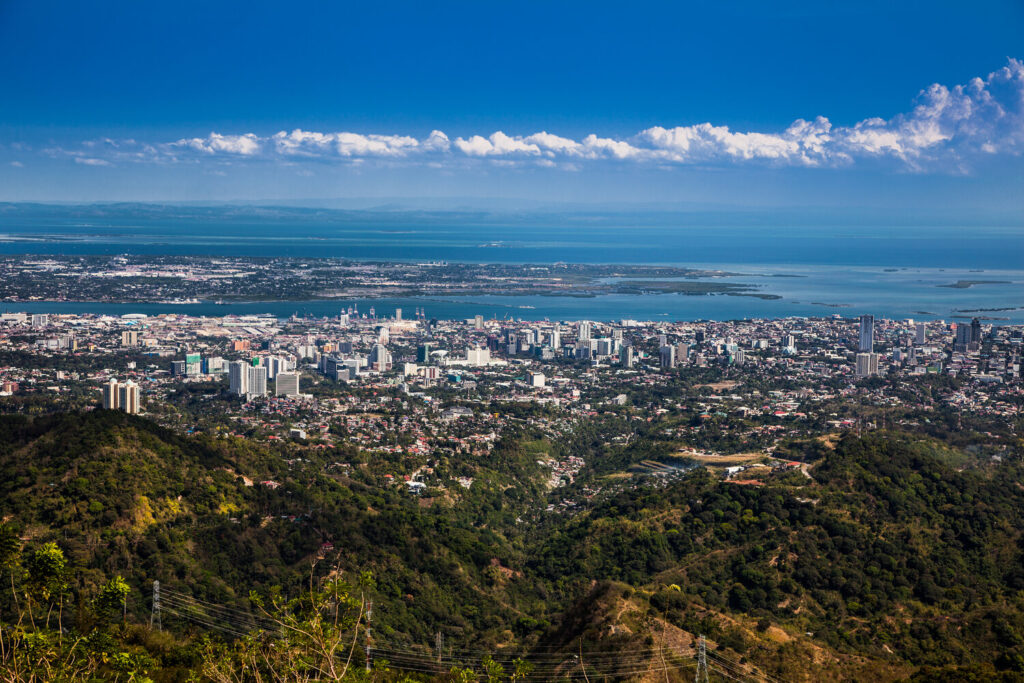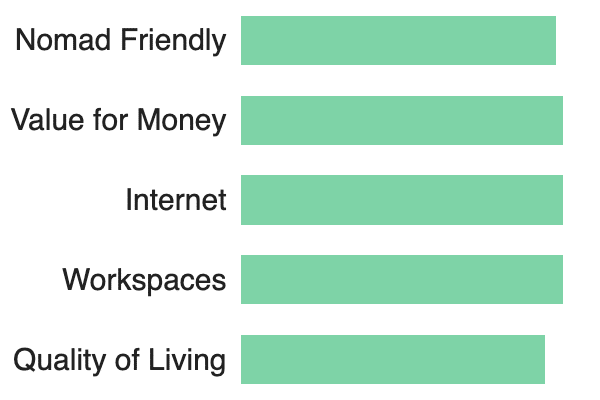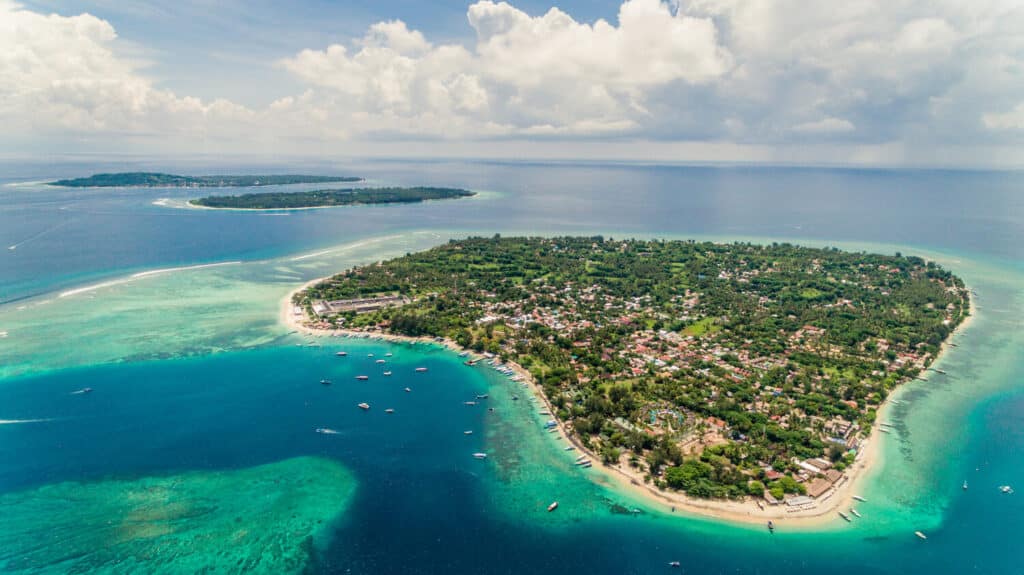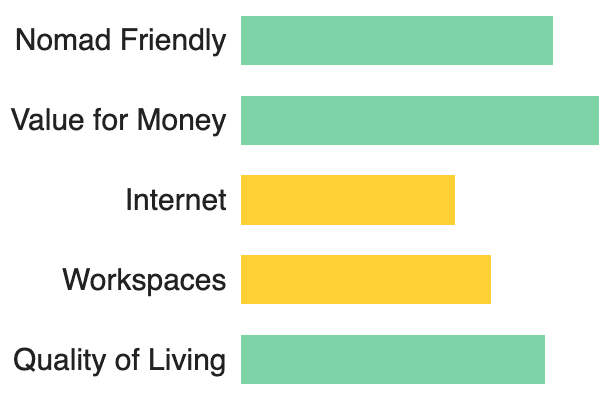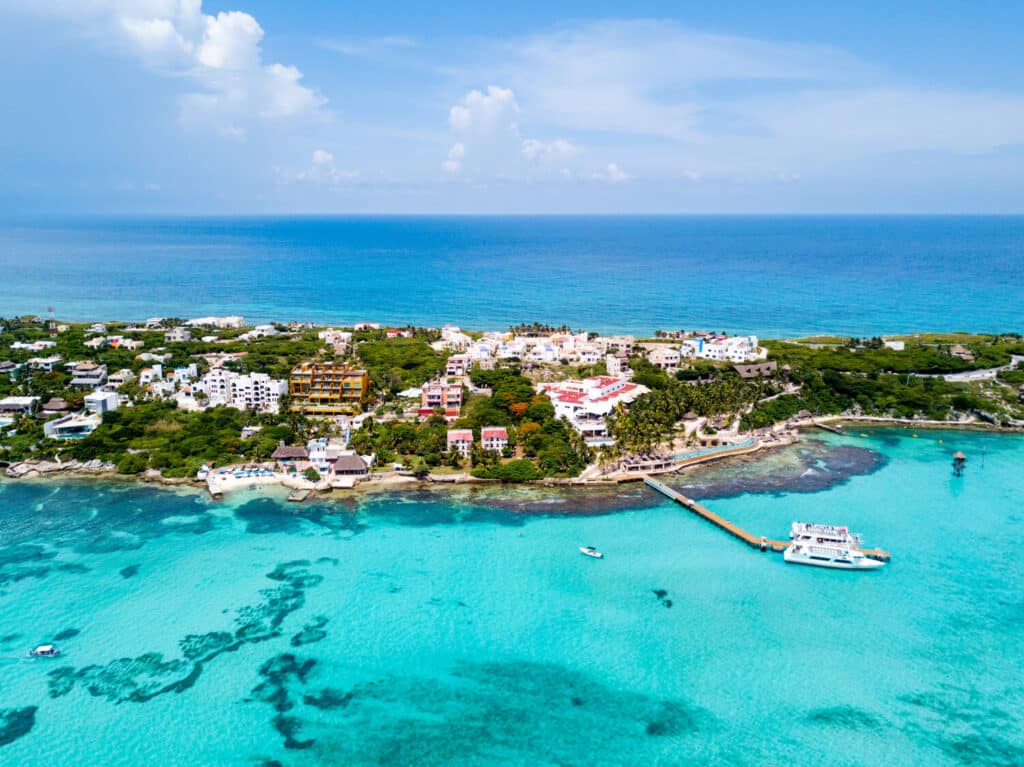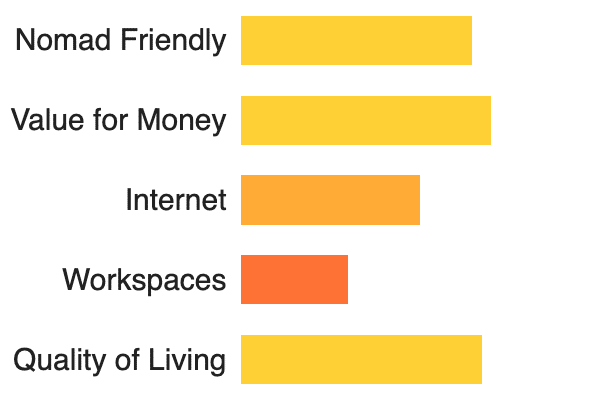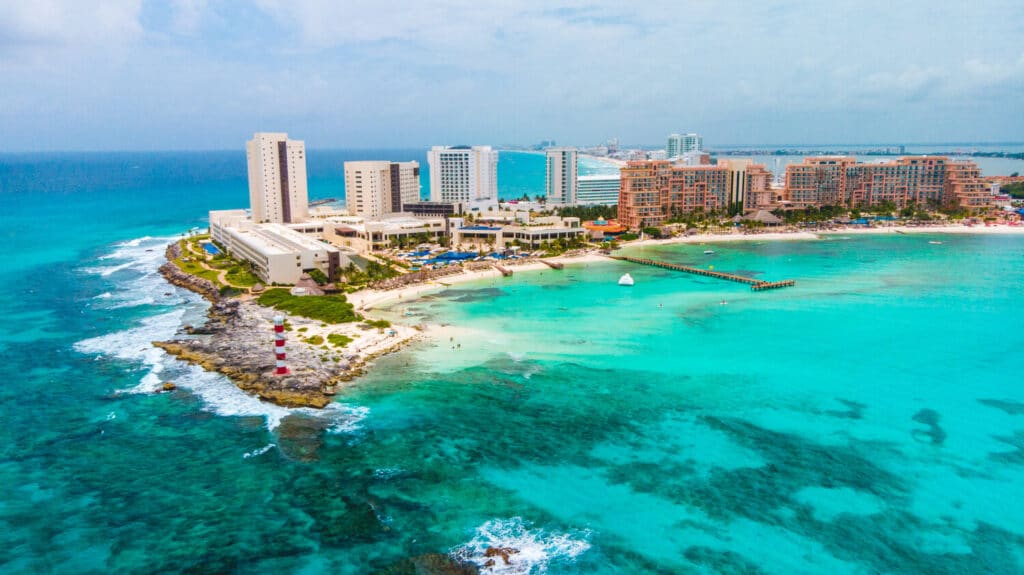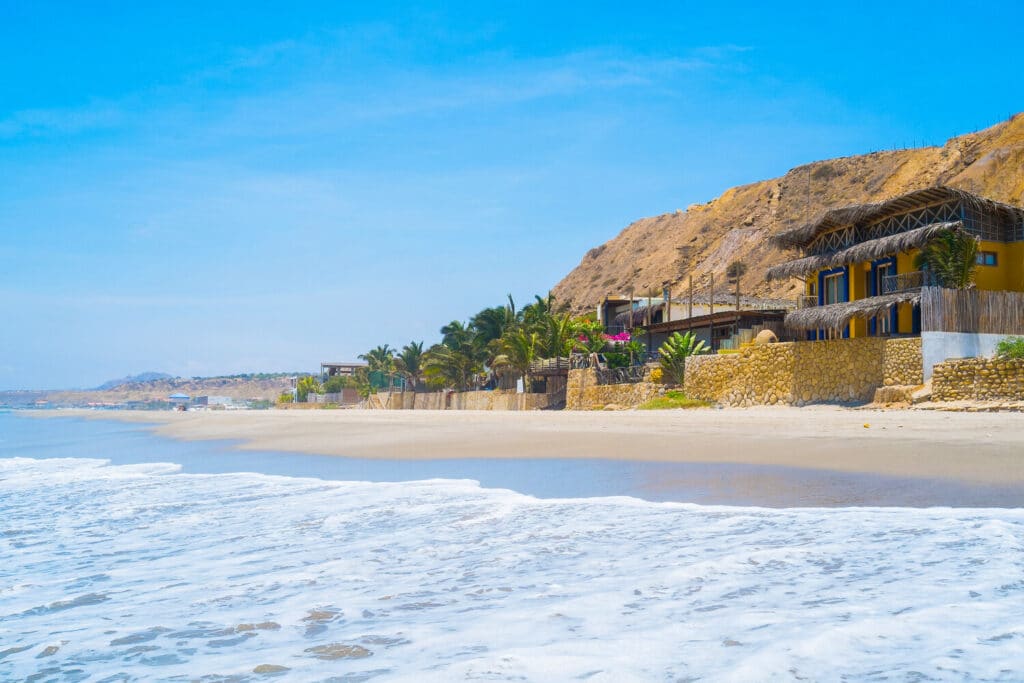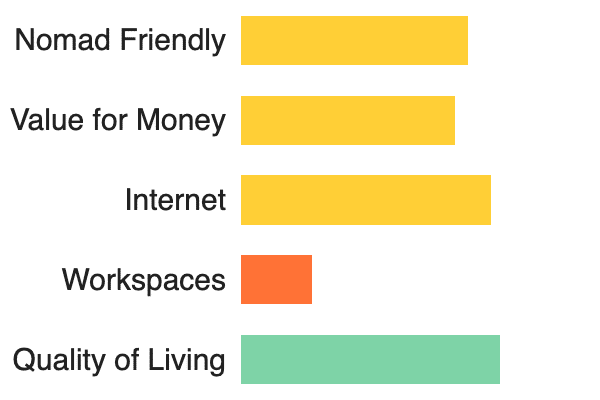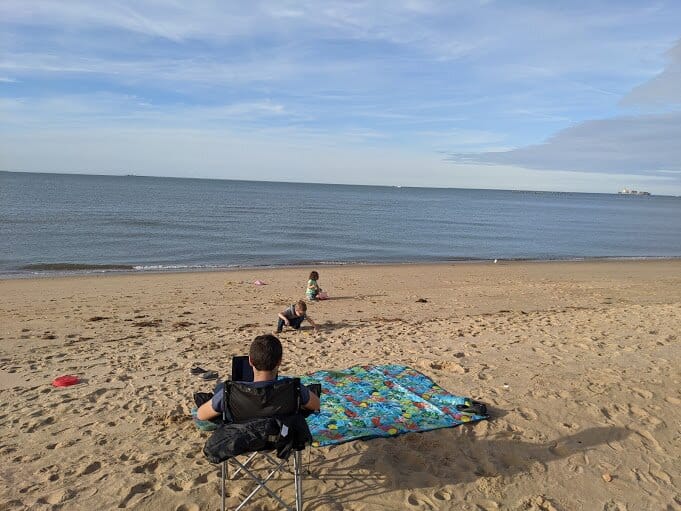
Of Sharks and Turtles
There is a lot of romance in travel. The iconic architecture of foreign lands, the crystal clear waters of exotic beaches, and, of course, the best tacos you’ve ever had in your life. What’s not to love?
But when the rubber meets the road, how many of us would actually uproot our family and take to the road less traveled?
My family is one such family, though our uprooting came from a move back to our home country after living as missionaries in Papua New Guinea. Coming back, we had a choice to make. Should we put down roots, or use the opportunity given to us to take our kids on an adventure across the globe?
We decided to travel (obviously), and we have loved (almost) every minute of it.
It’s not always as romantic as it sounds, and life as a digital nomad family brings with it a whole host of problems. But we’d just have different problems if we had decided to put down roots.
Problems or not, for my family, it has absolutely been worth it.
Packing and Preparations
I don’t think anyone realizes how much stuff they have until they decide to put all of it into a bag.
Making decisions on what to bring with you and what to leave behind is easily one of the greatest challenges of traveling, at least for my family. There are four of us in our family, and we decided fairly early on that we should each have our own bags. That means each of us needs to be able to fit everything that we own in a single 50lb bag, a carry-on, and a personal item.
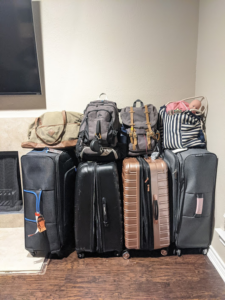 It’s harder than it sounds.
It’s harder than it sounds.
For one, my kids love their toys, and it just isn’t possible to fit all of them into their bags. Some of them are too big spatially, even though they don’t weigh much. There’s only so far you can shrink down stuffed animals. Other toys, like their Magna-tiles, pack down fairly tight, but they weigh a lot, mostly because magnets are literally rocks. They got left behind. But it’s definitely a bit of a balancing act because we don’t want to take away the things that give our kids a sense of stability.
For instance, my son has a large blanket that he absolutely loves. He slept with it every night while we were Stateside, but it would have taken up roughly half of the free space left in his bag after we packed the essentials. My wife, being the absolute genius that she is, helped him to cut off a piece of the blanket and make it into a pillowcase. It gives him a sense of continuity, even as we move from country to country.
And it wasn’t just the kids that had trouble fitting things. I have an entire TV tray that I bring with me everywhere we go. It’s not as lightweight as I would like, and it’s almost too large to fit in my suitcase, but there have already been several places where I would have been without a desk if I hadn’t brought it with me.
Homeschooling and Experiential Learning
One of the major reasons that we chose to travel with our kids was to give them the chance to learn more about the world. I’m a huge proponent of the idea of experiential learning, especially field trips. I think that it is a much more effective use of time to learn about something by going and doing it than to just read about it in a book.
As such, my family takes a lot of field trips. We’ve learned about architecture and history while exploring Mayan ruins, discussed proper nutrition while taking cooking lessons, and talked about how volcanoes work while cooking marshmallows over lava. Each of these experiences helped my kids to learn through doing, and my hope is that they are lessons that they won’t ever forget
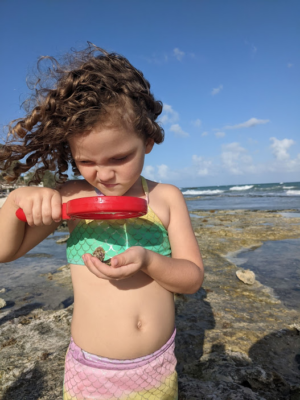 But even so, some things have to be learned through actual “schooling”.
But even so, some things have to be learned through actual “schooling”.
We were already doing homeschooling before we set off, but the curriculum we were using was extremely literature-heavy. We love reading, and we love sharing that with our kids, but a book-heavy curriculum ends up being literally pretty heavy.
I ended up using my phone to scan thousands of pages of books into a PDF format. That way we could bring them with us more easily.
It was not an enjoyable experience upfront but was well worth the effort. Both my wife and I take turns reading to the kids every night, so having those books ready and available, even if we’re in a place where we don’t want to unpack everything is pretty great.
The other thing that we’ve started doing is using video and app-based lessons to keep our kids learning even during those times when my wife and I are both working. This also eases the preparation workload for their schooling, since I can have my son do his math on his Kindle. I end up only having to explain concepts to him when he runs into problems. My daughter is a little younger, so we have to be more intentional about sitting down and explaining things with her, but it won’t be long until they will both be able to work through most things on their own.
Kids have an amazing capacity for learning, and it’s been great seeing our kids soaking up the knowledge from each of the places we’ve visited.
Work-Family Balance
One of the things that I love about what a nomadic life gives me is a better grasp on work-family balance. Last year, before we became digital nomads, I found a job working at a retail store. I went in for training, spent about 5 hours away from my family before getting sent home for the day, and had decided before I even made it home that that’s not the life I want to live.
Freelancing allows me to spend my day at home, so I can be available to my family when they need me. That doesn’t mean that it doesn’t come with its own sets of balance problems, though.
One of the great things about working a 9-5 is that outside of those hours, you are off. It doesn’t really work that way for freelancing unless you make it work. Instead, I might find myself working on getting an article edited at 10:00 at night, so I can turn it in for the morning. Or I may accidentally work through my lunch-time if I’m not careful. Yes, I can still eat, but my kids won’t be at the table when I do. It’s really easy to throw off the work-family balance.
So, even though I’m not tied down to any specific work hours, maintaining a specific schedule becomes super important for making sure that I am available to my family.
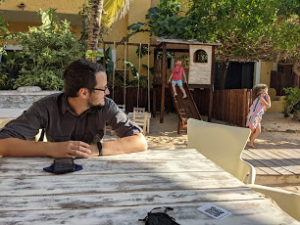 And that can go the other way, too. Sometimes I can get lost spending time with my kids, building things with legos when I should be working to provide my family with the things we need.
And that can go the other way, too. Sometimes I can get lost spending time with my kids, building things with legos when I should be working to provide my family with the things we need.
The real issue on both sides is staying focused. It’s important to stay focused on the things at hand and keeping a consistent schedule for those things helps. I have a really focused writing day on Tuesdays, where I basically lock myself away so I can focus on my work and get a lot of writing done. That’s important to my balance. But I also have my reading time with the kids scheduled every night at bedtime, and a day of exploring our location with the family every Saturday. And that’s just as important for keeping our life balance.
Cost of living
People often think that it’s too expensive to travel the world, but while there are definitely some expensive choices out there, for our family, traveling the world started as primarily a financial decision.
We had returned to the States after living in a single location overseas for around 5 years and began looking for employment and a place to live. And it wasn’t really feasible. Living in the States was more expensive than we could afford on our own. We would have had to live for free in my mother-in-law’s basement for a long while before being able to afford a place, which we didn’t want to do.
The average rent in the USA for a 2 bedroom apartment is just over $1100, and that wouldn’t include things like utilities, internet, and furnishing the place. Above and beyond that, we would have had to prove income equal to three times the rent amount to even qualify to be able to rent one of these places. We didn’t have that, at the time, and we weren’t sure how long it would take to get us to a place where we did.
In contrast, a fully furnished Airbnb in Mexico, with electricity and internet included cost us a little over $700 for the month. With travel included, it ended up costing about the same for the month as it would have cost us just for rent in the US. And that wasn’t even the cheapest place we could find.
If we stay longer in an area, it means we also don’t have to pay for travel, saving us even more. Traveling the world is quite honestly the most financially responsible decision that we could have made while still giving ourselves the freedom and space that we needed in order to thrive as a family.
Obstacles and Challenges
That’s not to say that everything about our life is easy.
Traveling as frequently as we do means that our life is filled with a ton of transition and uncertainty, and to put it bluntly, transition is hard.
When we arrive in a new area, the first task is always to figure out what’s available to us, and what isn’t. Often, the ingredients that we can get are different from what we had been using, so we have to change our meal plans. Even if there’s a ready replacement for a product that we use, it may taste different. Sometimes, we can’t get access to the same hygiene products and have to change what toothpaste or shampoo we use.
None of these things seem like a huge deal, but they add a lot to our mental load, and they can cause a lot of stress. I hate standing in a grocery store looking at three brands of pasta that I don’t recognize and having to make a choice. It’s usually not a big deal, but sometimes it turns out that it is, and by the time I find out I’ve already spent money on something that my family doesn’t like.
On top of that, we’re doing it all in a second language. I’m fluent in Spanish, but if I’m trying to speak while tired, I can sometimes completely fail to communicate.
It’s exhausting. And it can be a huge distraction from being able to get work or school done. Because we travel every month, things are constantly changing. A new place to stay. A new map to learn. New friends, restaurants, parks, and weather. These are all good things, but they’re also energy drains.
We’re still loving moving as often as we do for all the awesome benefits, but coping with that travel stress may eventually become the reason we slow down.
How did the experience impact you & your family?
My family is sort of unique in that even before we started doing the digital nomad life, we had a lot of experience with transition. We lived overseas in an area where there was a lot of uncertainty over what sorts of things would be available the next time we went to the store. We transitioned between a place in town and a place in the bush every few months, and while we had stability in both of those places, we still had to deal with tearing down and packing up our lives multiple times each year.
Even so, living as digital nomads has impacted us in some very real ways.
For one, we had to transition from thinking about home as a place (or two places), and start thinking about home as being people. Specifically, our family. Home is that feeling of safety that you need to be able to recover from the stresses of life, and if that’s tied to a place, then losing that place every month is needlessly hard. Home is people. It is family, and togetherness, and comfort. That’s a really important mental switch.
Another way that it has affected me specifically, is that it has given me a ton more confidence in myself and my capabilities. I’m much more certain of my ability to live pretty much anywhere now than I was even just a few months ago. Part of that is just from having to expand my abilities to improve the quality of my freelance work. But a larger part is from having to depend on myself for getting around the places that we’ve visited. I didn’t have a tour guide telling me what the next stop was. I had to figure that out for myself, and get there.
Knowing that I am able to do that, not just once but every time, is a great feeling.

Recommendations
My main recommendation is to get out of your comfort zone.
Especially as more and more people are picking up the digital nomad life, it is becoming easier and easier to stay inside the comfort zone even when traveling. Yes, you can totally eat at that McDonald’s or IHOP while visiting Mexico, but please don’t.
Instead, walk out of the touristy areas and find a hole in the wall that smells good. Pick up the menu and point at something you can’t pronounce, and don’t ask what it is until after you’ve eaten it. Trust me, this is a good call.
I also recommend visiting as many UNESCO World Heritage sites as you can. These are the places that embody some aspect of a location’s history and culture, and each one is a fascinating look into the past. I love them all.
Whether it’s some ancient ruins, a natural wonder, or a bustling historic city, UNESCO sites rarely disappoint and they’re usually a great counterpoint to the tourist staples, like beaches, shopping centers, and restaurants.
Lastly, I recommend spending time in your accommodations, especially if you are planning on being in an area for an extended amount of time. Admittedly, I am an introvert, but I feel like being able to spend down time recovering from your outings is key to being able to have the best possible experiences while you are out. If you just keep going so you can see everything, it is very possible to exhaust yourself to the point that you don’t enjoy all the things you see. Taking time to recover means being able to enjoy the things you do see, even if it ends up being fewer things overall.
It shouldn’t be about seeing it all. It should be about having the best experiences you can have.
Best Family Memory
Personally, my favorite memories from our travel experiences are mostly about things that we’ve experienced while out in nature. The one that stands out to me comes from one of our first trips out as digital nomads. We had decided to spend a few weeks camping at First Landing State Park in Virginia Beach, Virginia. The park is right on the shore, and during the week the beach is almost always empty. I loved being able to spread out on the beach with my family and watch the waves and the animals.

That beach was the first time I’ve ever seen a wild osprey catch a fish. It was amazing to watch its dive, and even more amazing to see it flying away with the fish hanging from its talons. Another time we saw dolphins, swimming not far off the shore.
Of course, each of my family members has their own “best” memory, because that’s the thing about traveling together. Even though we’re together, we all experience it differently.
One time we went snorkeling in Akumal, Mexico, looking for sea turtles. For my wife and me, it was great, getting to see the turtles swimming and admiring the other fish and rays that were in the water, but for my kids, it was super stressful because the guide mentioned that there might be sharks. Our kids didn’t realize that if we saw any sharks they would likely be harmless.
But really, that’s the whole digital nomad life in a single moment, if you think about it. The thing that holds most people back from jumping in and swimming is the fear of what might happen, what might be in the water.
There are some amazing things to see and do in this world, and even during a global pandemic, we’ve found most places to be amazingly accessible. The nomadic lifestyle isn’t for everyone, but travel itself is something that I can confidently suggest to anyone, even if they’re afraid.
You might find some sharks out there, sure, but you’ll almost always find some turtles.

